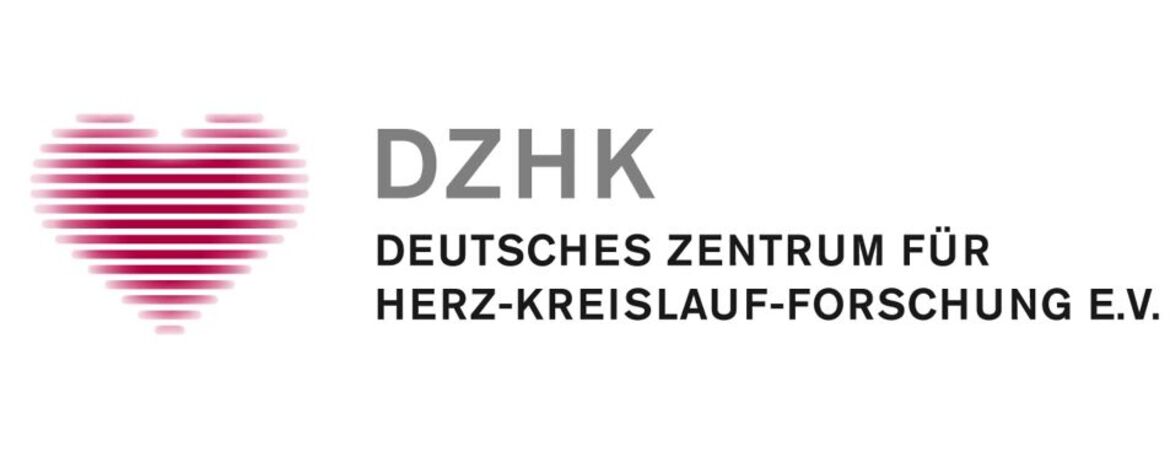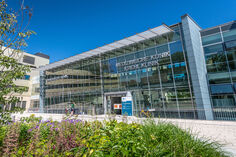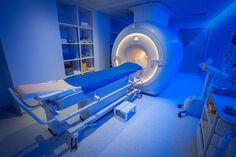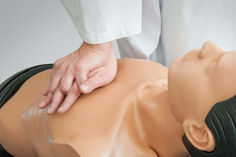- Arbeitsgruppen
- Klinisches Studienzentrum
- Sektion Kardio-Onkologie
- Section of Molecular and Translational Cardiology
- Sektion Internistische Intensivmedizin
- Klaus-Tschira-Institut für Computerkardiologie
- Heisenberg Professur für Immunkardiologie (W3)
- Heisenberg professorship for mRNA metabolismus
- Jun. Professur für Künstliche Intelligenz in der Kardiovaskulären Medizin
- Pregnancy Heart Team: Kardiologie der Schwangerschaft
- DZHK-Standort Heidelberg/Mannheim
- Heidelberg CardioBiobank (HCB)
- Scientific Management and Coordination Unit (SMCU)
Publications
Selected publications
1. Kehr D, Ritterhoff J, Glaser M, Jarosch L, Salazar RE, Spaich K, Varadi K, Birkenstock J, Egger M, Gao E, Koch WJ, Sauter M, Freichel M, Katus HA, Frey N, Jungmann A, Busch C, Mather PJ, Ruhparwar A, Busch M, Völkers M, Wade RC, Most P.
S100A1ct: A Synthetic Peptide Derived From S100A1 Protein Improves Cardiac Performance and Survival in Preclinical Heart Failure Models
Circulation. 2024 Nov 21.doi: 10.1161/CIRCULATIONAHA.123.066961. Online ahead of print.
2. Seitz A, Busch M, Kroemer J, Schneider A, Simon S, Jungmann A, Katus HA, Most P, Ritterhoff J.
S100A1's single cysteine is an indispensable redox switch for the protection against diastolic calcium waves in cardiomyocytes.
Am J Physiol Heart Circ Physiol. 2024 Jul 1;327(1):H000. doi: 10.1152/ajpheart.00634.2023. Epub 2024 May 31.
3. Noll D, Kehr D, Most P, Ritterhoff J.
S100A1: a promising therapeutic target for heart failure.
Expert Opin Ther Targets. 2024 Apr;28(4):233-236. doi: 10.1080/14728222.2024.2345746.
4. Ritterhoff J, Völkers M, Seitz A, Spaich K, Gao E, Peppel K, Pleger ST, Zimmermann WH, Friedrich O, Fink RHA, Koch WJ, Katus HA, Most P.
S100A1 DNA-based Inotropic Therapy Protects Against Proarrhythmogenic Ryanodine Receptor 2 Dysfunction.
Mol Ther. 2015 Aug;23(8):1320-1330. doi: 10.1038/mt.2015.93.
5. Rohde D, Schön C, Boerries M, Didrihsone I, Ritterhoff J, Kubatzky KF, Völkers M, Herzog N, Mähler M, Tsoporis JN, Parker TG, Linke B, Giannitsis E, Gao E, Peppel K, Katus HA, Most P.
S100A1 is released from ischemic cardiomyocytes and signals myocardial damage via Toll-like receptor 4.
EMBO Mol Med. 2014 Jun;6(6):778-94.doi: 10.15252/emmm.201303498.
6. Brinks H, Rohde D, Voelkers M, Qiu G, Pleger ST, Herzog N, Rabinowitz J, Ruhparwar A, Silvestry S, Lerchenmüller C, Mather PJ, Eckhart AD, Katus HA, Carrel T, Koch WJ, Most P.
S100A1 genetically targeted therapy reverses dysfunction of human failing cardiomyocytes.
J Am Coll Cardiol. 2011 Aug 23;58(9):966-73. doi: 10.1016/j.jacc.2011.03.054.
7. Pleger ST, Shan C, Ksienzyk J, Bekeredjian R, Boekstegers P, Hinkel R, Schinkel S, Leuchs B, Ludwig J, Qiu G, Weber C, Raake P, Koch WJ, Katus HA, Müller OJ, Most P.
Cardiac AAV9-S100A1 gene therapy rescues post-ischemic heart failure in a preclinical large animal model.
Sci Transl Med. 2011 Jul 20;3(92):92ra64. doi: 10.1126/scitranslmed.3002097.
8. Most P, Seifert H, Gao E, Funakoshi H, Völkers M, Heierhorst J, Remppis A, Pleger ST, DeGeorge BR Jr, Eckhart AD, Feldman AM, Koch WJ.
Cardiac S100A1 protein levels determine contractile performance and propensity toward heart failure after myocardial infarction.
Circulation. 2006 Sep 19;114(12):1258-68. doi: 10.1161/CIRCULATIONAHA.106.622415.
9. Most P, Pleger ST, Völkers M, Heidt B, Boerries M, Weichenhan D, Löffler E, Janssen PM, Eckhart AD, Martini J, Williams ML, Katus HA, Remppis A, Koch WJ.
Cardiac adenoviral S100A1 gene delivery rescues failing myocardium.
J Clin Invest. 2004 Dec;114(11):1550-63.doi: 10.1172/JCI21454.
A complete list of publications can be found here:
https://pubmed.ncbi.nlm.nih.gov/?term=%22Most%20P%22%20%5Bauthor%5D&sort=date
https://pubmed.ncbi.nlm.nih.gov/?term=%22ritterhoff+j%22+%5Bauthor%5D&sort=date
- Arbeitsgruppen
- Klinisches Studienzentrum
- Sektion Kardio-Onkologie
- Section of Molecular and Translational Cardiology
- Sektion Internistische Intensivmedizin
- Klaus-Tschira-Institut für Computerkardiologie
- Heisenberg Professur für Immunkardiologie (W3)
- Heisenberg professorship for mRNA metabolismus
- Jun. Professur für Künstliche Intelligenz in der Kardiovaskulären Medizin
- Pregnancy Heart Team: Kardiologie der Schwangerschaft
- DZHK-Standort Heidelberg/Mannheim
- Heidelberg CardioBiobank (HCB)
- Scientific Management and Coordination Unit (SMCU)








